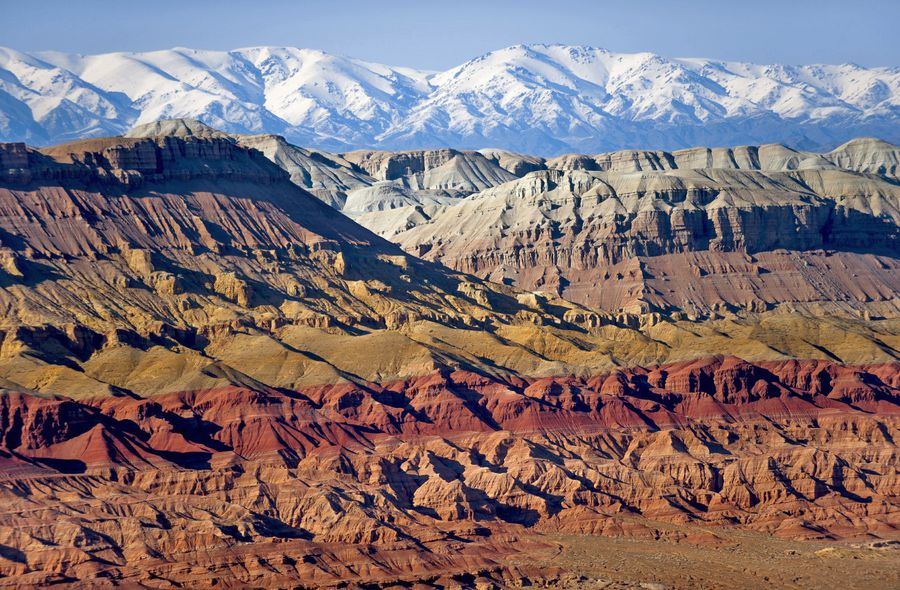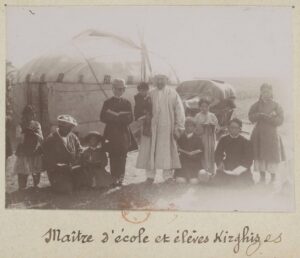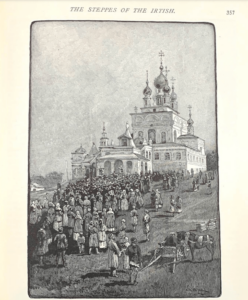Courtesy of Personal Library of Former Ambassador of Kazakhstan to the United States of America H.E. Erzhan Kazykhanov

The previous issue on the Abai Center focused on Henry Lansdell’s 1885 book entitled “Russian Central Asia” where he spoke of his observations made during his travels through the Kazakh steppes.
Today, we would like to draw the attention of our readers to Henry Lansdell’s two volume book entitled “Chinese Central Asia” that was published in London in 1893. In Lansdell’s own words, this book is intended to be a companion and complement to his Russian Central Asia. The main object of his journey, the author explains, was to spy out the land for missionary purposes.
Most of the illustrations presented in these two volumes are from Landell’s own photographs, and have been drawn to illustrate articles in Harper’s and Scribner’s Magazines, the Graphic, the Fishing Gazette, and Black and White, as well as a series of letters on a “Ride to Little Tibet” in the Daily Graphic.
As the previous two volumes focused generously on Lansdell’s detailed descriptions of Kazakh nomadic lifestyle, this specific work tells readers about his travels through the south of Kazakhstan, and the author’s findings and observations regarding the places he visits.
For example, the Lansdell notes that Aulie-Ata might be called the capital of the Kazakhs, since they form so large a proportion of its inhabitants. The place had increased considerably since his previous visit, and now all ablaze with illuminations during the Muhammadan fast of Ramadan, – he concludes. Then Lansdell speaks of how they travelled 104 miles from Aulie-Ata to reach Merke which is another well-known place in southern part of Kazakhstan.
Perhaps one of the most informative chapters written in this book discuss Lansdell’s historic accounts of Vierny after an earthquake. The author notes that when, in 1820, he descended from Western Siberia, through monotonous steppes of Semey, the praises of Vierny had been sung as beautiful for situation and the joy of the land. As we drew near, he recalled, the town was seen lying about a dozen miles only from the foot of the Trans – Ili Ala-Tau Mountains, which lift their summits to the snow line, while two peaks, Almaty and Talgar, attain respectively to 14,000 and 15,000 feet.
Lansdell describes in detail the day of an earthquake in Vierny that was a shock to many locals and prompted evacuation measures. He says that the city of Vierny, with its brick houses to the number of 1,840 was ruined as people rushed for accommodation to the 840 humbler wooden houses. Hundred years on, thanks to modern technology and construction know-how, then Vierny and now Almaty is one of the most vibrant cities of Kazakhstan where all buildings adhere to the international seismic standards.

Another part of Lansdell’s book is devoted to the depiction of his journey from Vierny to the Chinese Frontier. Here the author shares his experience of departing Vierny, arriving at Jarkend and Ilisk, and witnessing the natural beauty of Altyn-Immel. As Lansdell puts in, “our road, after leaving Vierny, lay across a region of river and lake deposits which continued beyond our first station and some five and twenty five miles east of the Ili. Then we began to ascend over crystalline limestone and argillaceous schists, as well as porphyries and quarts-felsite, up to a height of 4,000 feet above the sea level, to the post station of Altyn-Immel”1.

Overall, Chinese Central Asia recounts Lansdell’s 9,000-mile journey across the Tian Shan Mountains and into Western China, and describes the peoples he encountered, their history and religion, crafts and customs, modes of dress, natural history, trade and medicine. This two volume book is a true gem for anyone interested in history, geography, and culture.
- p. 145 ↩






